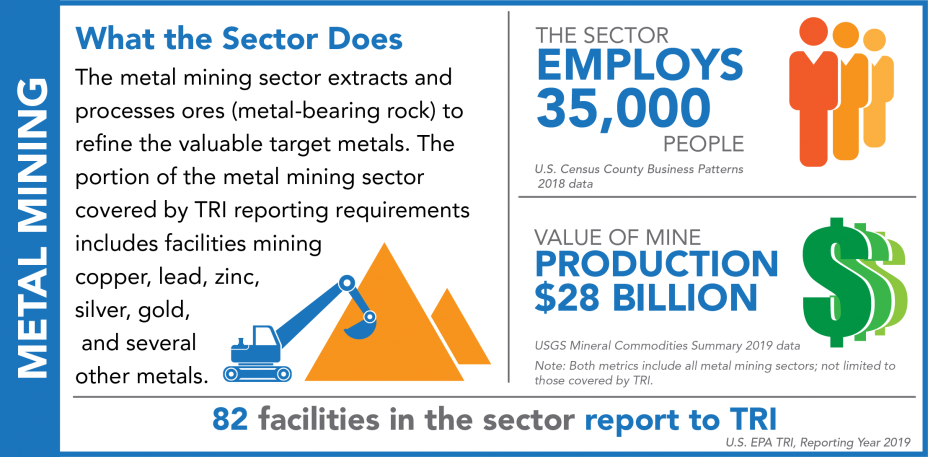Metal Mining
This section examines how TRI chemical wastes are managed in the metal mining sector (defined as facilities reporting their primary NAICS code as 2122).

This map shows the locations of the metal mining facilities that reported to TRI for 2019, sized by their relative releases. Click on a facility for details on its TRI reporting. Mines are shown on this map based on their longitude/latitude, which may be miles from the city identified on the mine’s TRI reporting forms. Mines can qualify their location relative to the city by noting the distance in the street address data field of their TRI reporting forms.
Metal Mines Reporting to TRI, 2019
View Larger Map
For 2019, 82 metal mining facilities reported to TRI. They tend to be in western states where most of the copper, silver, and gold mining occurs; however, zinc and lead mining tend to occur in Missouri and Tennessee. Metals generated from U.S. mining operations are used in a wide range of products, including automobiles, electric and industrial equipment, jewelry, and decorative objects. The extraction and processing of these minerals generate large amounts of on-site land disposals, primarily of metal-bearing rock (called ore) and waste rock containing TRI-covered metals. To learn more about metal mining operations and their TRI reporting, explore the interactive metal mining diagram. Metal mining operations are subject to federal and state regulations.
This page was published in January 2021 and uses the 2019 TRI National Analysis dataset made public in TRI Explorer in October 2020.

